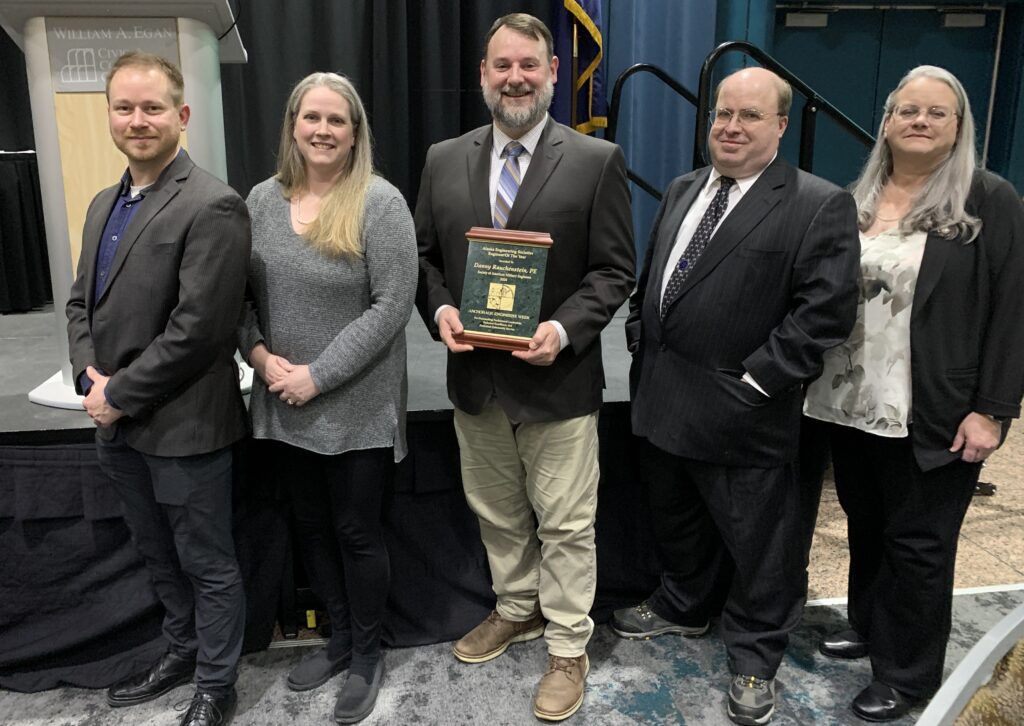Engineering Excellence in Extreme Conditions: Celebrating Danny Rauchenstein
 In a state where engineering challenges meet the extremes of nature, Danny Rauchenstein has spent decades solving the unsolvable. From sub-zero temperatures to seismic zones, his work spans the globe—but it’s the projects in Alaska that define his legacy. This year, Rauchenstein was honored as Alaska’s Engineer of the Year, an award that recognizes his outstanding leadership, technical innovation, and deep commitment to both his profession and his community.
In a state where engineering challenges meet the extremes of nature, Danny Rauchenstein has spent decades solving the unsolvable. From sub-zero temperatures to seismic zones, his work spans the globe—but it’s the projects in Alaska that define his legacy. This year, Rauchenstein was honored as Alaska’s Engineer of the Year, an award that recognizes his outstanding leadership, technical innovation, and deep commitment to both his profession and his community.
This prestigious award is coordinated by the Alaska Society of Professional Engineers. It represents a collective recognition from multiple organizations, including the Society of American Military Engineers (SAME), American Society of Mechanical Engineers (ASME), American Society of Civil Engineers (ASCE), Institute of Electrical and Electronics Engineers (IEEE), American Society of Heating, Alaska Refrigerating and Air-Conditioning Engineers (ASHRAE) and the Structural Engineers Association of Alaska (SEAAK), among others.
“It’s incredibly meaningful,” Rauchenstein said. “But none of these successes happen in a vacuum. Every great project takes a team. Being singled out feels a bit surreal—and I’m honored.”
Rauchenstein is Senior Vice President of Facilities at RESPEC and a Principal Mechanical and Fire Protection Engineer. His career spans more than 25 years, with an unmatched record of success in cold-region, mission-critical, and community-based projects.
Engineering in the Extreme: Three Signature Projects
Among Rauchenstein’s most iconic contributions is the Margaret Murie Life Sciences Building at the University of Alaska Fairbanks. Facing one of the most demanding climates in the U.S., he helped pioneer the use of radiant floor heating and cooling in a large-scale lab facility—a method not widely recommended by industry standards. Yet, the result was the lowest energy-use building on campus, completed ahead of schedule and under budget, with the contractor returning $1 million to the university. “We challenged conventional thinking,” Rauchenstein said. “And it worked.”
In Antarctica, Rauchenstein led engineering for the McMurdo Station IT and Communications Facility, a critical data center serving clients like NASA and NOAA. He and his team designed infrastructure that withstood brutal logistics, a short construction season, and COVID-era constraints. The facility features advanced systems, including a microturbine that provides both power and heat—innovations that position it among the world’s most resilient cold-region buildings.
Back home, Rauchenstein contributed to the development of Camp Fire Alaska’s Camp K Upper Campus on Kenai Lake, providing pro-bono services to a non-profit that provides safe, nurturing places for families to send their children. He oversaw the planning and design of various dormitory housing units, a central bath house, a nature center, and a system of trails, created to provide the kids a safe learning environment in the Alaskan wilderness.
Rooted in Alaska, Committed to the Future
Born in Fairbanks and raised between there and Talkeetna, Rauchenstein’s career has always been anchored in Alaska. He’s also a consistent volunteer and board member for nonprofits including Camp Fire Alaska, and he helped set up an endowment through the RESPEC Foundation to fund a $3,000 annual STEM scholarship.
“The opportunities I’ve had aren’t typical,” he said. “I’ve been lucky to work on projects that matter. If this award says anything, it’s that pushing boundaries—technically and personally—can make a lasting difference.”

Stay in Touch